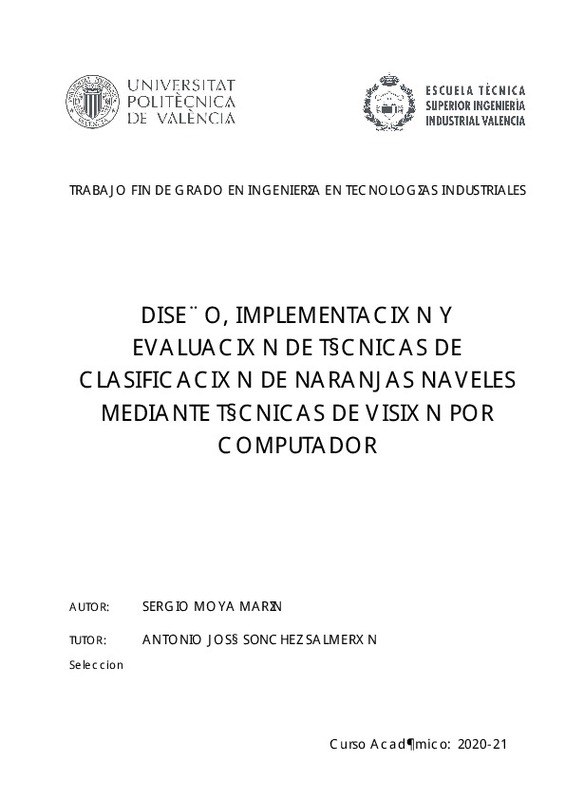JavaScript is disabled for your browser. Some features of this site may not work without it.
Buscar en RiuNet
Listar
Mi cuenta
Estadísticas
Ayuda RiuNet
Admin. UPV
Diseño, implementación y evaluación de técnicas de clasificación de naranjas naveles mediante técnicas de visión por computador
Mostrar el registro completo del ítem
Moya Marín, S. (2021). Diseño, implementación y evaluación de técnicas de clasificación de naranjas naveles mediante técnicas de visión por computador. Universitat Politècnica de València. http://hdl.handle.net/10251/174169
Por favor, use este identificador para citar o enlazar este ítem: http://hdl.handle.net/10251/174169
Ficheros en el ítem
Metadatos del ítem
| Título: | Diseño, implementación y evaluación de técnicas de clasificación de naranjas naveles mediante técnicas de visión por computador | |||
| Autor: | Moya Marín, Sergio | |||
| Director(es): | ||||
| Entidad UPV: |
|
|||
| Fecha acto/lectura: |
|
|||
| Resumen: |
[ES] El objetivo de este trabajo consiste en el diseño, implementación y evaluación de diferentes técnicas de clasificación de imágenes basadas en visión artificial con la finalidad de poder analizar la posible automatización ...[+]
[EN] The objective of this project is the design, implementation and evaluation of different image classification techniques based on artificial vision in order to analyse the possible automation of the quality control ...[+]
|
|||
| Palabras clave: |
|
|||
| Derechos de uso: | Reserva de todos los derechos | |||
| Editorial: |
|
|||
| Titulación: |
|
|||
| Tipo: |
|
recommendations
Este ítem aparece en la(s) siguiente(s) colección(ones)
-
ETSII - Trabajos académicos [10528]
Escuela Técnica Superior de Ingenieros Industriales







